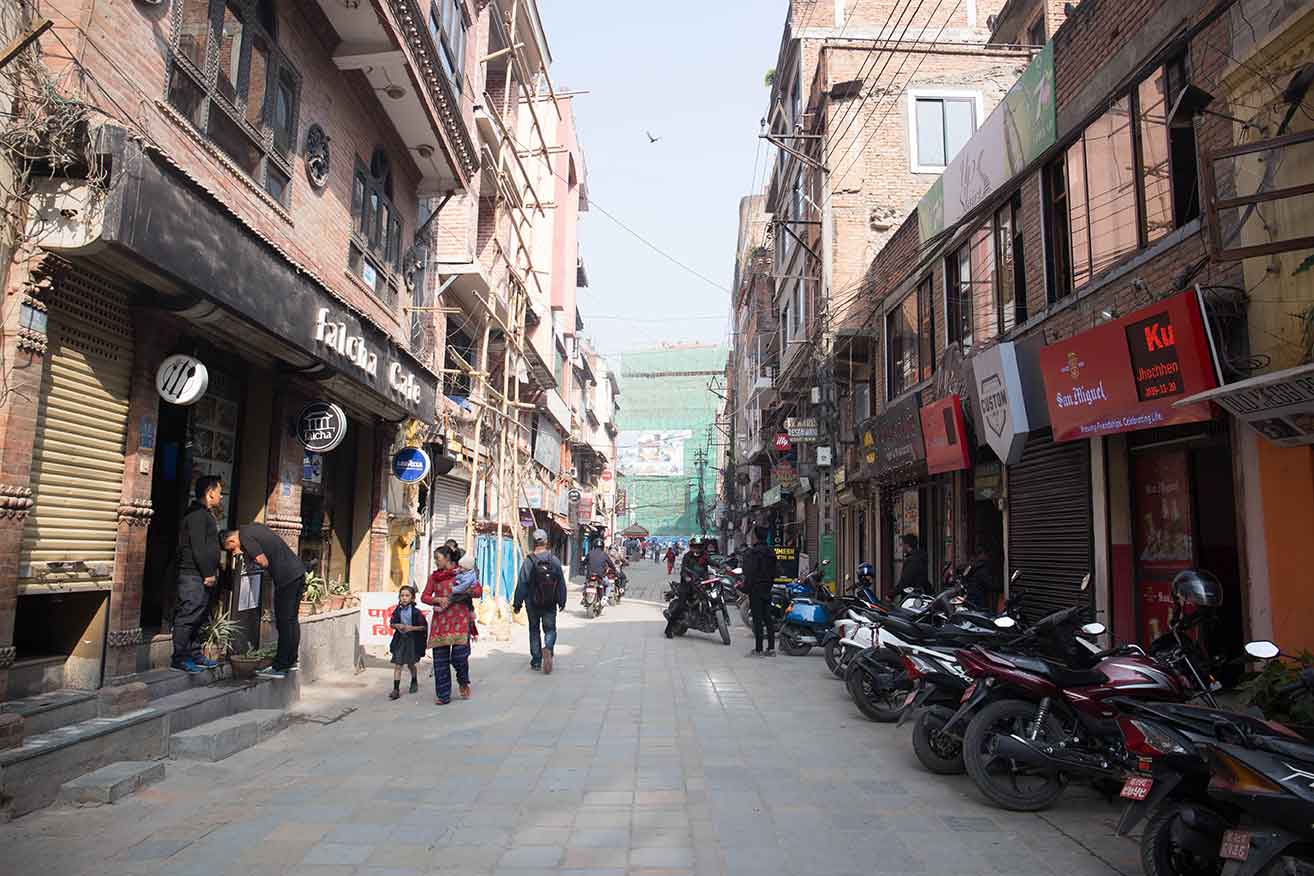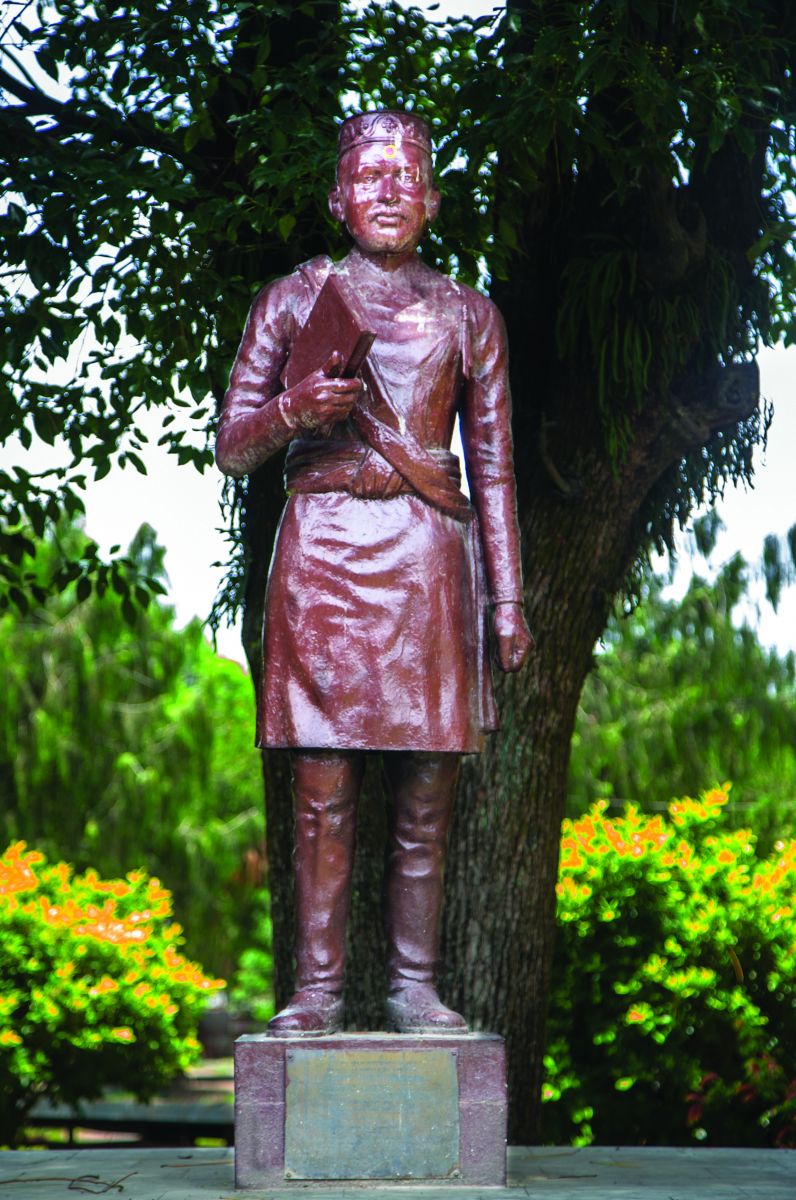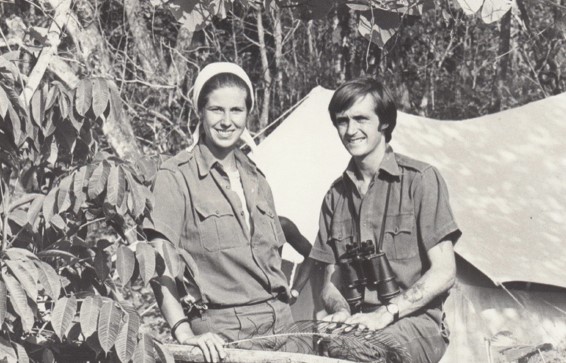
It’s not easy being a hippy. Even if embracing the flowing clothes, dangling necklaces, open sandals, and flowers in the hair is not too hard, there is all that sitting around, smoking dope, and staring into space. Plagued by a nagging protestant work ethic, excess energy, and an irrational fear of boredom, I have never been good at doing nothing.
In the spring of 1974, the route from Pokhara to Jomsom had just reopened for trekkers. I had come to explore the network of trading trails that cobweb the Nepal Himalaya, part of a wider overland wander that began in Bali and took me through South East Asia and Burma to Kathmandu, then a hippy haven. I arrived on the short rackety flight from Rangoon, wide-eyed and entranced, eager to embrace the adventures Nepal had to offer.
Blissfully unprepared and recklessly casual, I trekked alone through the deepest gorge in the world with Annapurna and Dhaulagiri towering on either side. My feet ached with blisters, formed before a kindly ex-Gurkha teashop owner forced some good woollen socks on me, and I had a large bruise on my thigh from a water buffalo at Ghorepani that did not appreciate my friendly pat. But, I was enthralled, captivated by the scenery and people of these sacred mountains. Basking in their warmth and hospitality, something about the place made me feel deeply at home.
 After the trek, impatient with hanging out in Kathmandu on a tight budget amidst the joint-rolling tabletops of Freak Street, I devoured temples, palaces, and medieval bazaars, cycling through the emerald terraces to discover the valley’s outlying shrines and remote corners. It wasn’t long before a chance meeting in the Panorama Hotel’s Union Jack Bar resulted in the opportunity to visit Tiger Tops Wildlife Lodge in Royal Chitwan National Park. I leapt at it, rescued from my stoned indolence.
After the trek, impatient with hanging out in Kathmandu on a tight budget amidst the joint-rolling tabletops of Freak Street, I devoured temples, palaces, and medieval bazaars, cycling through the emerald terraces to discover the valley’s outlying shrines and remote corners. It wasn’t long before a chance meeting in the Panorama Hotel’s Union Jack Bar resulted in the opportunity to visit Tiger Tops Wildlife Lodge in Royal Chitwan National Park. I leapt at it, rescued from my stoned indolence.
And so it was that, although I never meant to stay, I am still here. Over 40 years later, I write sitting in the garden of the yellow Rana and Newar-style house with traditional terracotta roof tiles that Tenzin and I built in Budhanilkantha, overlooking Kathmandu Valley. The afternoon light filters through the trees, insects are busy amidst the flowers, doves call from among the rocks, and the stream that becomes the Vishnumati River gurgles through the adjacent wood. Of course, Nepal has changed since 1974, but the strong sense of connection that overcame me then still endures.
The excitement of exploring the jungle on elephant back deep in tiger country does not disappoint. That first trip to Tiger Tops was a turning point. I became hooked on the wild thrill of the jungle, and persuaded the maverick owner, Jim Edwards, to give me a job.
“If you can talk me into that, you can talk anyone into anything!” Jim leant back smiling with resignation in his blue chair in Tiger Tops’ Durbar Marg office, a shop front that is now an expensive jeweller’s. I rushed back to the jungle before he could change his mind, and for the next few years Chitwan became my home, before I moved to Kathmandu working with him as director of marketing in a career that lasted over 20 years.
****
Afternoons in the Terai jungle in May are endless, oppressive, and soporific, with the heavy smell of dense grass awaiting revival by the monsoon. The thick sweltering heat shimmies as the afternoon haze dances on the horizon. Chitwan’s tangled grasslands are dying, matted into heaps of crackling gold and brown.
As a newcomer to the Tiger Tops world, I was keen to be part of the team. Not just with the bosses Jim Edwards, his brother John, and Chuck McDougal, but particularly with the Nepali staff, many of whom had been there since the lodge first opened in 1964. My special favourites were the Subedar headman, whose flat teak-coloured features and cropped hair bestowed an air of unassailable authority, and master tiger tracker Krishna Gurung, who had a shy smile that lit up his face and a fluid gait hard to keep up with on jungle trails. I already had earned a nickname, I learned later–Hattini–which means lady elephant. I liked to think this was due to my nearly six-foot height.
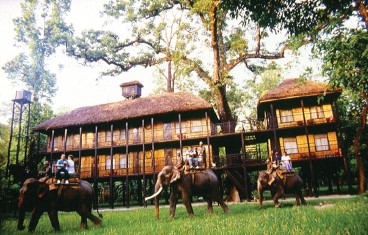 The Tiger Tops lodge community numbered about two hundred people if you included the elephant camp and the chaps who labored to pump the water and tend the roads. Dressed in shades of buff and khaki, we were a self-contained group with lives defined by our jobs, a hierarchy of interlocked relationships. Like living on a ship, I used to think, sailing in a sea of dense green trees.
The Tiger Tops lodge community numbered about two hundred people if you included the elephant camp and the chaps who labored to pump the water and tend the roads. Dressed in shades of buff and khaki, we were a self-contained group with lives defined by our jobs, a hierarchy of interlocked relationships. Like living on a ship, I used to think, sailing in a sea of dense green trees.
Room boys doubled as waiters, shikaris guided walks and safaris, and drivers were also skilled mechanics, which was just as well, given the ageing Land Rover fleet. Some of the open green jeeps were peppered with bullet holes, allegedly acquired in some warzone before being divested by the British army, and one had a tin-opener gash in the door made by the horn of a charging rhino.
Mornings were busy with organizing lodge logistics—elephant safaris, wildlife walks, jeep drives, elephant camp visits, room lists, menus, supplies, and flight and road arrivals and departures. The black board in the cramped wooden office with screened windows behind the kitchens was our blueprint for the day.
One hot afternoon, soon after I arrived, I was battling the humidity, pouring with sweat even while I rested motionless on the bed. It was that quiet time of respite when guests had been dispatched on their safaris and we had a rare hour to ourselves.
Someone hammering on the door jolted me out of my reverie. “Come quickly, memsahib, the kitchen is on fire!” As I raced down the packed mud path, the crackling in the air reached me at the same time as the shouts of the boys. The smell of burning was unmistakable, and as I crossed the rickety wooden footbridge, I could see flames rising from the kitchen roof. A stone building with wooden beams and glassless windows, only sheets of corrugated iron separated the sparks of the open cooking fires from the grass of the thatched roof.
It was a chaotic scene. Water was being carried from the pumps and river in buckets, and a few brave souls were on the kitchen roof, trying to separate the grass from the flames so it did not ignite further. The air was filled with flying black cinders, and everyone was shouting advice as I took my place, using my height to lift the pails up to the men on the roof. Soon, a more orderly relay line was formed, as the buckets were passed from person to person, then to me to hoist up to eager hands. It was not long before the embers were drenched, the danger subsided, and fear of the fire spreading was quashed. The main lodge rooms, central golghar, office, and store were all safe.
Smeared with ashes and soaked with spilled water, we hugged each other with relief. I can still smell the burning grass stench that filled our throats. “That was close,” observed Chuck, ever sparing with words. “Your height came in handy,” Krishna smiled at me kindly, and the Subedar unexpectedly shook my hand. On that hot afternoon, Hattini earned her stripes and now belonged to the Tiger Tops team.
****
I loved the complex logistics required to manage a safe, up-market wildlife enterprise in the heart of a national park. Everything had to run smoothly for the guests, and my colleagues were skilled former Gurkha army engineers, Tharu elephant drivers, Kumal boatmen, and Tamang cooks. I learned how to identify every sound in Chitwan, motorized or natural—all so different from my native north of England countryside—studying wildlife behavior with the Indian and Nepali naturalists.

Airport duty had become my favorite task. In khaki shorts and floppy hat, I enjoyed greeting the arriving guests at the bottom of the wheeled wooden aircraft steps, the same ones used for boarding the elephants who were lined up patiently behind me, drivers lolling on their flat grey heads.
On this particular afternoon, I was meeting a group of middle-aged middle-Americans, who chattered excitedly as I supervised their loading for the two-hour elephant safari through the national park to the lodge. The elephants heaved themselves onto their feet to squeals of delight and clicking cameras. “Please do not drop litter and be silent once inside the jungle so as to maximize wildlife sightings—rhinoceros, deer, wild boar, monkeys, crocodiles, birds, and always the chance of a leopard or tiger.” A frisson of expectancy crackled through the group.
In the distance, the shadowy white outlines of the Himalaya floated above the wrinkled middle hills. Most times, I took the open baggage vehicle back to the lodge, but today it was piled high with provisions, so I elected to join the Americans on the elephant safari. My ride, Rup Kali, extends her hind leg on command from Sultana, her wiry dark-skinned driver, so I can climb up onto her back, feeling smugly like an expert. Off we all lumber, across the river and into the trees.
Having trawled the thick grasslands and passed a couple of tals, pools left stranded by the ever-changing Terai waterways, the wildlife safari is running its course, and the afternoon light is fading to rose. Weary from hanging onto the swaying howdah, dodging branches, I decide it is time to get back to the lodge. The elephants emerge onto a park track that I recognize, and I signal to Sultana that I’ll get down to walk.
Setting off on foot down the long straight jungle road, I ignore a sound in the bushes, my mind occupied with dinner recipes dependent on today’s supplies, and my legs enjoying the exercise. The crushed-insect scent of pale clerodendrum flowers is heavy in my nostrils and a fine dust rises with my footsteps. A shout alerts me. I turn in horror to see a large rhino emerging onto the open road behind me, a young calf close to her side.
Mercifully, Rup Kali and several other elephants are still on the track, having not yet faded into the forest. The mahouts urge them backwards, anxious not to drive the rhino closer towards me. Stories of adrenalin-fuelled feats in the face of extreme danger flash through my frozen brain, but there is no way that I can find a climbable tree to scale, from the smooth trunks of the towering sal or solid silk-cotton trees whose horizontal branches are of unreachable height.
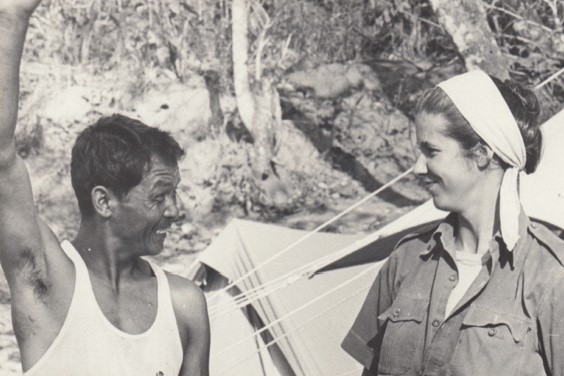
The rhino mother, short sighted and aggressive in protection of her young, pauses uncertainly on the track. Head high with concern, she turns first to me, and then to the retreating elephants, assessing her options. Deciding I am the easier target, she charges towards me, the baby close behind. Another revelation—how quick and nimble is an oncoming rhino, despite its massive bulk, and how impressive her huge size and great folds of rough skin-like armor plating. I have no hope of outrunning her, and can only clamber onto the high but inadequate buttress roots behind a handy bombax tree. Rup Kali, with her load of startled tourists and Sultana in full cry, hurtle down the road in pursuit, trumpeting, shouting, waving, and throwing sticks. The rhino veers away and takes off into the undergrowth.
That evening, much Khukri rum flowed in the elephant camp at my expense. I was mercilessly teased for my ignorance of the danger of walking alone in the Chitwan jungles. I can still taste the fear and feel my trembling knees as I cowered uselessly behind that tree. Too little knowledge and too much confidence is a treacherous combination in the wild, but I had survived, saved by Sultana and Rup Kali.
Working with Jim Edwards was fun, entertaining, and innovative, and I reveled in the rhythms of jungle life. I was young, it was a golden time for nature tourism, and at last I felt I was doing something useful; no longer an unsuccessful hippy!





